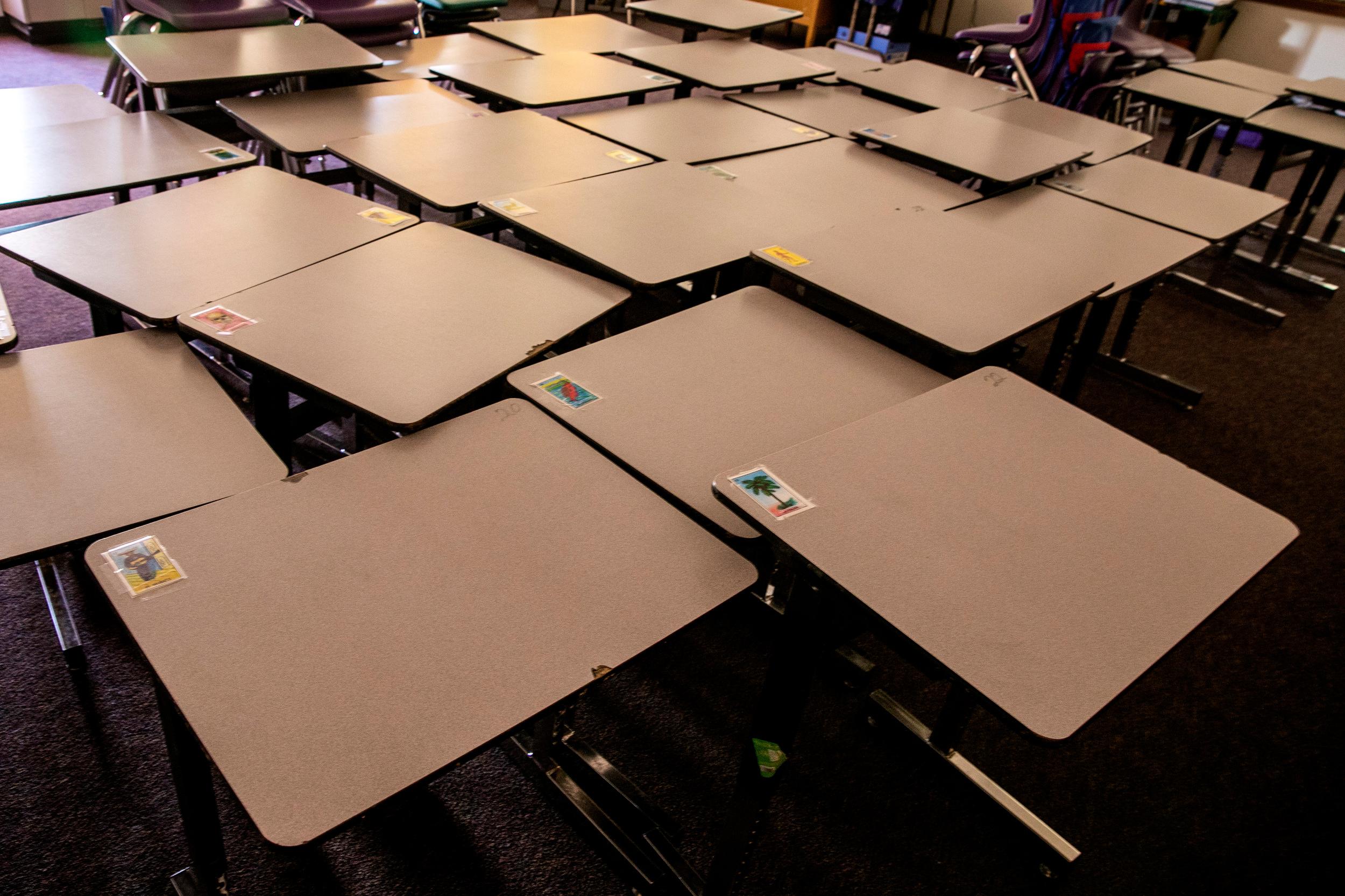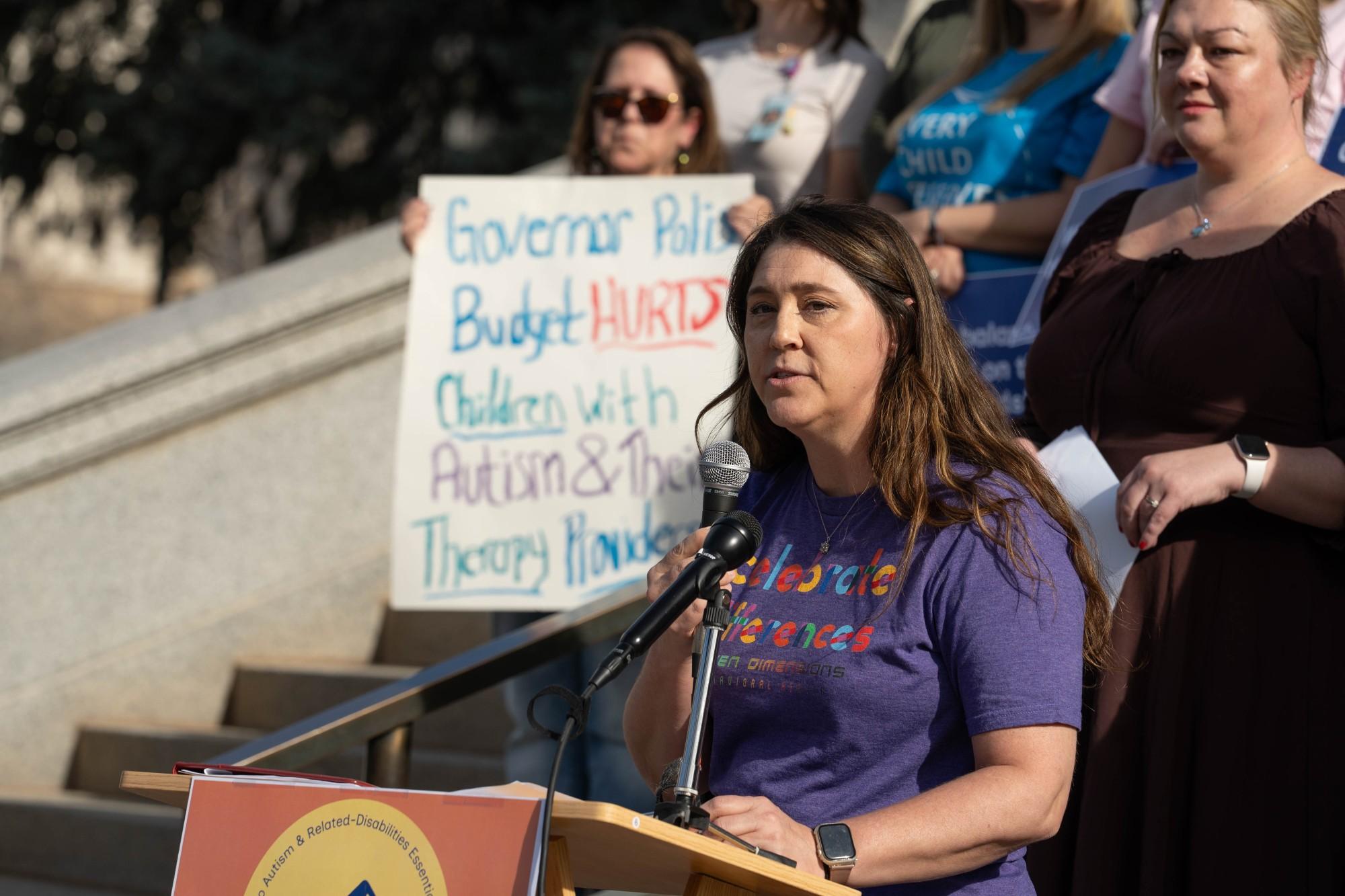
Twelve metro Denver school district superintendents are calling on state health officials to immediately end COVID school quarantines.
They point to low transmission rates in schools as the reason for their ask, and they say the protective health benefits of quarantines are small. The group said in a letter that the costs of quarantines to students' social and emotional development and academic progress have been great, resulting in a “choppy, inconsistent school experience” for thousands of students.
Aurora Public Schools Superintendent Rico Munn said schools have been committed to following the science and data around COVID transmission during the pandemic.
“Today, the science and data tell us that the frequent quarantining of students, especially those who are only symptomatic, has, at best, reached the point of diminishing returns; and, at worst, is causing unnecessary harm to our students' long-term mental health and educational development.”
More than 3,000 students each week have been quarantined over the past two weeks across 13 districts. Yet data show extremely low transmission rates in schools — less than 0.02 percent of students and staff who are quarantined end up testing positive.
In the most extreme case, the leaders said, a student was sent home on quarantine six times, with many other students being sent home two to three times. Many lost more than a month of in-person learning.
The April 26 letter the school districts sent to the Colorado Department of Public Health and Environment asks for “prompt action” to end the quarantines, but school leaders say they have heard nothing yet back from state officials. The districts include Adams 12 Five Star, Jefferson County, Littleton, Aurora, Cherry Creek, Douglas County, Westminster, Platte Canyon, Englewood, 27J, Mapleton, and Elizabeth school districts.
Denver Public School officials did not sign on to the letter.
Educators say students see little to no consistency as quarantine rules bring them in and out of the classroom.
When many schools lifted in-person restrictions after spring break, more students began returning to school in person. At the same time, more students have also been sent home. State quarantine rules dictate that large numbers of students be sent home each time there is a school exposure to a COVID-positive person.
The superintendents say the frequent school quarantines have caused constant disruption to classroom environments, stress for students preparing for end-of-year exams, “and a lack of predictability and consistency in almost every facet of a student's school experience.”
“The lack of continuity in the [learning] experience is really contributing significantly to frustration, to lack of productivity,” said Chris Gdowski, superintendent of the Adams 12 Five Star school district. “And there's not a compelling health reason to justify it any longer.”
Gdowski said many high school students have asked to transition to online learning during the second semester even though they prefer learning in person because of the frequent quarantining. He said many have told him they worry about not being able to participate in graduation or take exams in person even when they’re not ill or symptomatic.
“For a lot of our students, they feel like they're most focused and most effective if they're in an in-person setting and they worry greatly about all of those kinds of things being a jeopardy if they get caught up in the quarantining.”
If the quarantine rules remain in place as schools head into the final month of the school year, school districts estimate 10 to 20 percent of all students in their districts could be sent home to quarantine.
While case rates among young people are increasing, in-school transmission remains low.
At a press briefing Wednesday, state officials said COVID rates among children age 11 to 17 are increasing faster than in adults, and there has been an increasing trend in school-related outbreaks over the past several weeks.
Gov. Jared Polis, however, said most of the spread among youth is happening as vaccinated parents and grandparents take their unprotected children with them out in public.
“While their elders may be protected, the young people don’t have that level of protection,” he said, reiterating that schools are safe places.
Gdowski said incident rates among youth now are a fraction of what they were in the late fall, and that the consistent message from health officials was that COVID transmission rates in schools are low and mitigation measures — such as social distancing — are working. For their part, health officials have also underscored how critically important it is to have students in school for their social, emotional, and academic development.
Similar experiences with disruptive quarantines and low rates of in-school transmission have led 11 states — Ohio, Utah, Missouri, Texas, Nebraska, Oklahoma, Iowa, Wyoming, New Hampshire, North Dakota and Indiana — to eliminate prior quarantine rules. In-school transmission rates remain low in those states.
“In-school COVID transmission remains low in each of these jurisdictions, and none of them has needed to rescind their new response protocols because of a surge in COVID activity,” the superintendents’ letter stated.
The superintendents want quarantines replaced with protocols that other states have adopted, and which Colorado schools now follow alongside quarantining — indoor masking for students and staff, home isolation for COVID-positive staff and students, and for those who are symptomatic, staying home from school.
“The best place for our students is in the classroom,” said Westminster Public Schools Superintendent Pamela Swanson.
Meanwhile, 16- and 17-year olds are now eligible to get the Pfizer vaccine, available at drive-through sites, pharmacies and Children’s Hospital Colorado. Polis said he’s hopeful 12- through 15-year olds will be approved for the vaccine before school starts next year.








